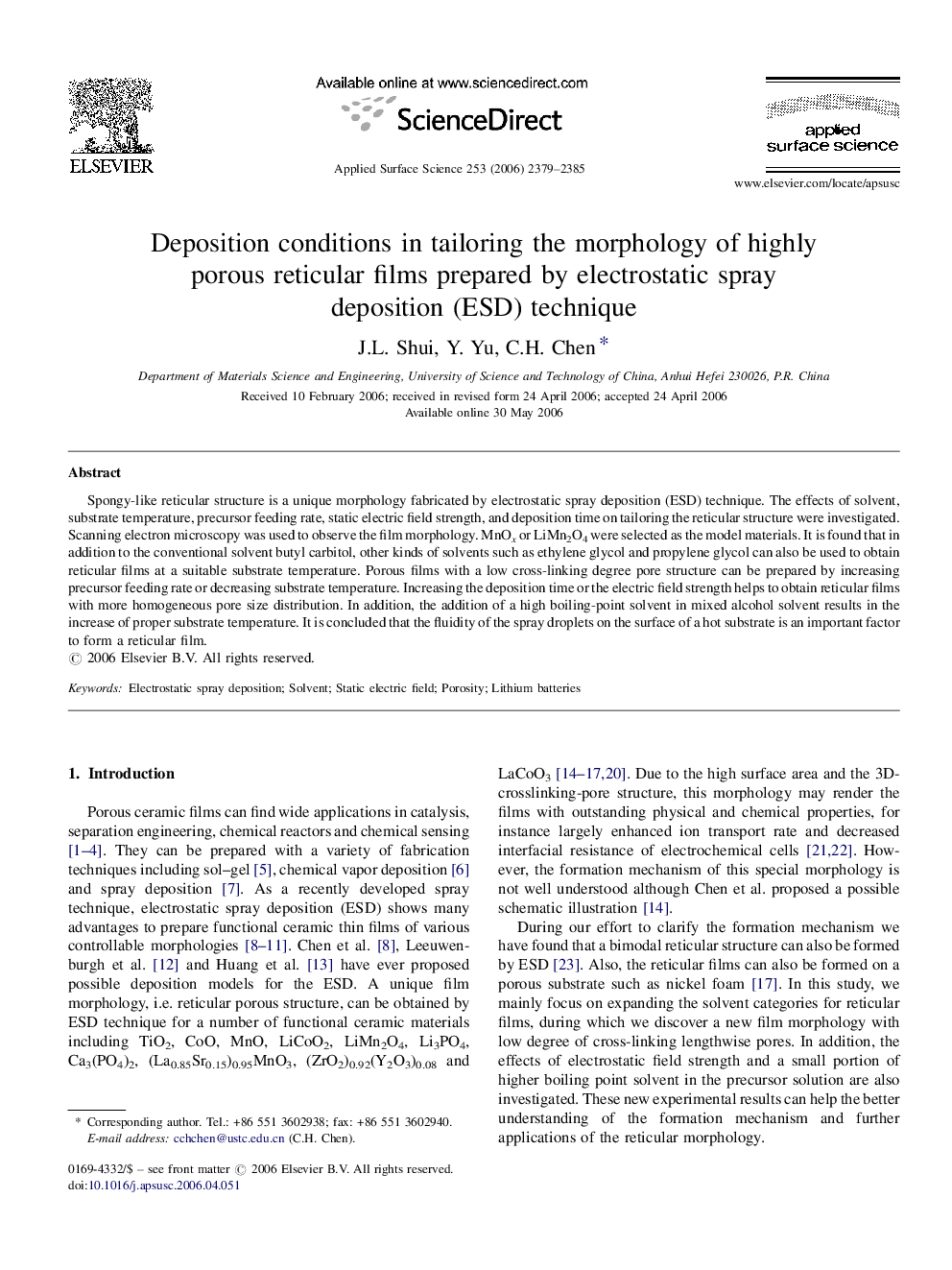| Article ID | Journal | Published Year | Pages | File Type |
|---|---|---|---|---|
| 5369901 | Applied Surface Science | 2006 | 7 Pages |
Spongy-like reticular structure is a unique morphology fabricated by electrostatic spray deposition (ESD) technique. The effects of solvent, substrate temperature, precursor feeding rate, static electric field strength, and deposition time on tailoring the reticular structure were investigated. Scanning electron microscopy was used to observe the film morphology. MnOx or LiMn2O4 were selected as the model materials. It is found that in addition to the conventional solvent butyl carbitol, other kinds of solvents such as ethylene glycol and propylene glycol can also be used to obtain reticular films at a suitable substrate temperature. Porous films with a low cross-linking degree pore structure can be prepared by increasing precursor feeding rate or decreasing substrate temperature. Increasing the deposition time or the electric field strength helps to obtain reticular films with more homogeneous pore size distribution. In addition, the addition of a high boiling-point solvent in mixed alcohol solvent results in the increase of proper substrate temperature. It is concluded that the fluidity of the spray droplets on the surface of a hot substrate is an important factor to form a reticular film.
